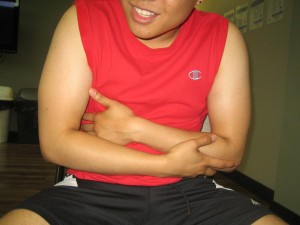Acute cholecystitis is characterized as inflammation of the gallbladder. It generally occurs once a gallstone obstructs the cystic duct.
https://www.youtube.com/watch?v=R9YTJ7WID9U
Gallstones are small-sized stones, generally made up of cholesterol that form in the gallbladder. They do not typically trigger any symptoms but can occasionally trigger episodes of pain or acute cholecystitis.
The condition is not usually serious but requires treatment in a healthcare facility with adequate rest, intravenous fluids and antibiotics.
What are the signs?
The chief indication of acute cholecystitis is abrupt, sharp pain in the upper right side of the abdomen. The pain can radiate to the right shoulder.
The affected region of the abdomen is generally tender and deep breathing can make it worse.
The abdominal pain caused by acute cholecystitis is continuous and does not settle within a few hours.
In some cases, there are additional symptoms such as:
- Fever
- Sweating
A doctor must be seen if the individual develops abrupt and severe abdominal pain especially if it lasts longer than a few hours or complemented by other signs such as fever and jaundice. - Nausea and vomiting
- Appetite loss
- Protrusion in the abdomen
- Yellowish tinge to the skin and white part of the eye
When to consult a doctor
A doctor must be seen if the individual develops abrupt and severe abdominal pain especially if it lasts longer than a few hours or complemented by other signs such as fever and jaundice.
It is vital for acute cholecystitis to be diagnosed right away due to the possibility of serious complications that might arise if treatment is delayed.
Management of acute cholecystitis
If an individual has been diagnosed with acute cholecystitis, hospitalization is required for proper treatment.
Primary treatment
The initial treatment typically includes:
- Fasting to relieve the strain from the gallbladder
- Pain medications to lessen the pain
- Intravenous fluids to prevent dehydration
The individual might also be given antibiotics if an infection is suspected. These must be taken for up to a week which is the time the individual is staying in the hospital.
After the initial treatment, any gallstones responsible for acute cholecystitis generally moves back into the gallbladder and the inflammation often subsides.
Surgical intervention
The removal of the gallbladder might be suggested at some point after the initial treatment to prevent the recurrence of acute cholecystitis and lower the risk for serious complications. The surgical procedure is called as cholecystectomy.

